Top 10 YouTube Alternatives for You to Explore in 2025
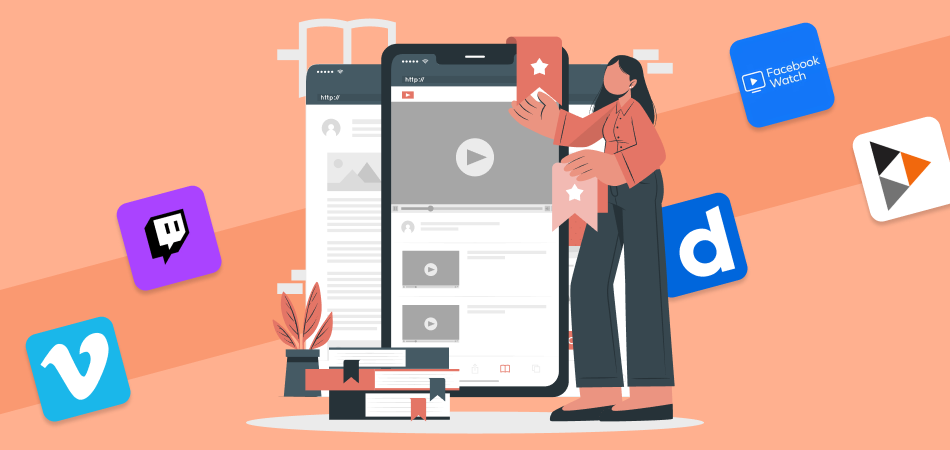
YouTube has been the dominant platform for video content for years, but it's not the only option available. Whether you’re a content creator looking for better monetization opportunities, a business searching for alternative video hosting platforms, or simply a viewer wanting a different experience, numerous YouTube alternatives cater to diverse needs.
In 2025, these platforms continue to evolve, offering unique features, better privacy policies, and creative freedom. This article explores the top 10 YouTube alternatives that you should consider.
What Is YouTube & Why Is It Popular
YouTube is the world’s largest video-sharing platform, boasting billions of users and an extensive content library. Launched in 2005, it has revolutionized digital entertainment, enabling users to upload, share, and monetize videos. The following are some reasons why it’s popular.
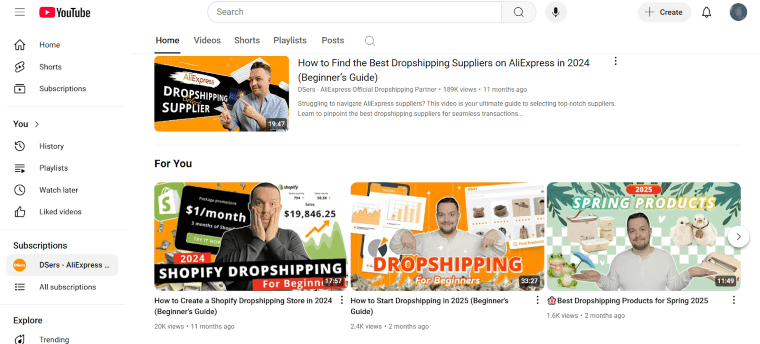
- Massive Audience – Billions of users visit YouTube daily, providing vast exposure for content creators.
- Monetization Opportunities – Creators can earn through ads, memberships, and sponsorships.
- Search Engine Integration – As a Google-owned platform, YouTube benefits from powerful search and recommendation algorithms.
- Diverse Content – From educational tutorials to entertainment and news, YouTube offers content for every niche.
- Live Streaming & Shorts – With features like YouTube Shorts and live streaming, creators can engage audiences in multiple ways.
However, YouTube’s increasing ad load, strict content policies, demonetization issues, and privacy concerns have led many users and creators to seek alternatives. Let’s explore the best YouTube alternatives in 2025.

|
Pre-set the Best Shipping Methods DSers Shipping Settings - Pre-select your favorite shipping method to save money and time |
10 Best YouTube Alternatives
YouTube is a dominant platform for video content, but there are several alternatives that cater to different audiences and needs. Here’s a look at the 10 best YouTube alternatives, let’s check them out one by one.
1. Vimeo
Founded in 2004, Vimeo is a video-sharing platform that caters primarily to filmmakers, artists, and businesses. Unlike YouTube, Vimeo focuses on high-quality video hosting with no ads, making it an excellent choice for professionals who prioritize video quality and presentation. It is particularly popular among creative professionals, businesses, and educational institutions.
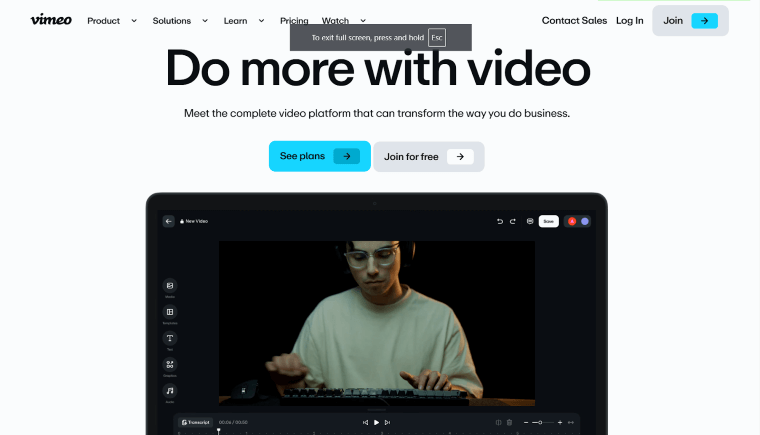
Key Features
- No ads or intrusive pop-ups
- High-quality 4K video support
- Advanced privacy controls
- Monetization through pay-per-view and subscriptions
- Great for business and creative professionals
- High-quality video streaming
- Excellent customer support
- Ad-free experience
- Limited free plan
- Smaller audience than YouTube
2. DTube
DTube (Decentralized Tube) is a blockchain-based video-sharing platform that provides a censorship-resistant and decentralized alternative to YouTube. It runs on the Steem blockchain, meaning content is stored across multiple nodes rather than centralized servers, ensuring data security and independence from corporate control.
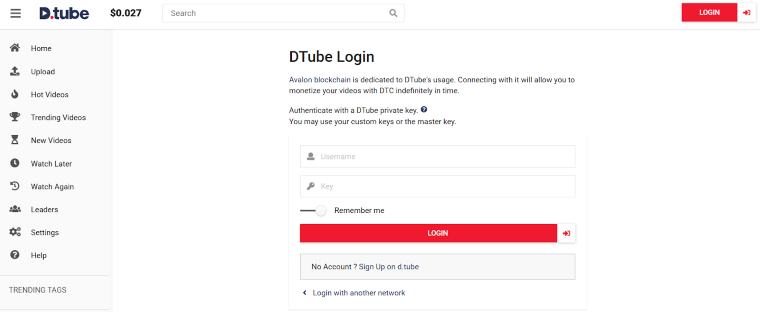
Key Features
- No ads or intrusive tracking
- Cryptocurrency rewards for views and engagement
- Decentralized hosting
- Greater content ownership for creators
- Censorship-resistant
- Earn cryptocurrency for content
- No intrusive ads
- Smaller user base
- Not as feature-rich as YouTube
3. Twitch
Launched in 2011 and later acquired by Amazon, Twitch is the leading live-streaming platform primarily focused on gaming. While it started as a platform for gamers, it has since expanded to include content such as talk shows, creative streams, and music performances.
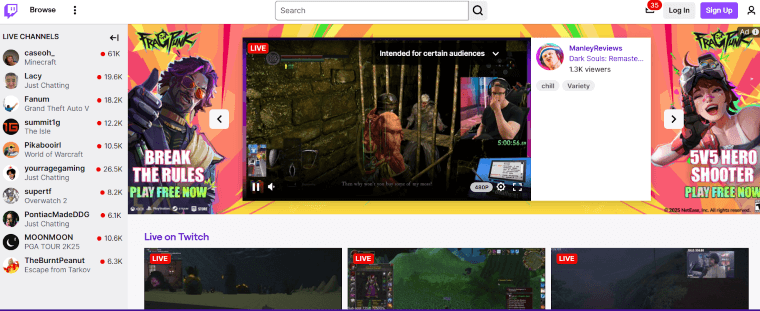
Key Features
- Real-time interaction through chat
- Subscription-based monetization
- Strong gaming and entertainment community
- Partner and affiliate programs for creators
- Engaged live audience
- Multiple monetization options
- Strong community support
- Focused mostly on gaming
- Highly competitive environment
4. Rumble
Rumble is a video-sharing platform founded in 2013 that has gained popularity as an alternative to YouTube, particularly for content creators seeking better monetization options. It has fewer content restrictions and allows creators to earn money from multiple revenue streams.
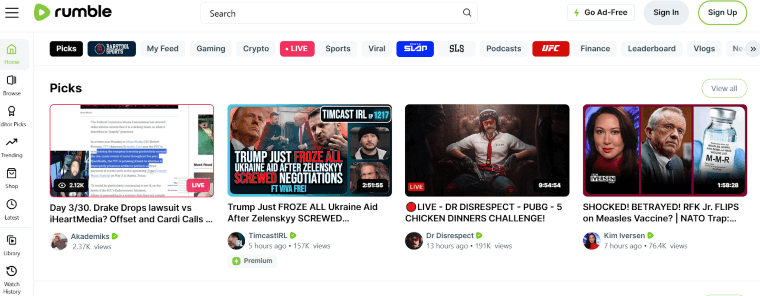
Key Features
- More creator-friendly monetization
- Fewer content restrictions
- Syndication to major news outlets
- Growing user base
- Better revenue share for creators
- Less restrictive content policies
- Growing popularity
- Not as well-known as YouTube
- Limited content diversity
5. PeerTube
PeerTube is an open-source, decentralized video-sharing platform launched by Framasoft. Unlike centralized platforms like YouTube, PeerTube enables users to host their own video servers, creating a network of interconnected but independent video-hosting instances.
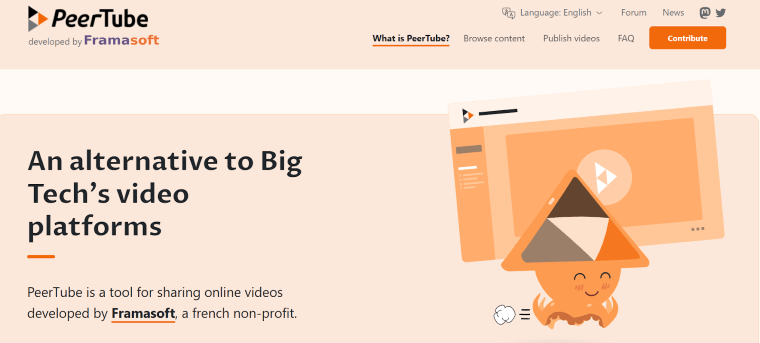
Key Features
- Community-driven hosting
- No ads or algorithmic interference
- Peer-to-peer video distribution
- Open-source and customizable
- No corporate control
- No ads or tracking
- Fully customizable
- Requires technical knowledge to set up
- Smaller audience
6. Facebook Video
Facebook Video is part of the larger Facebook ecosystem and allows users to upload and share videos easily. It has become an essential part of Facebook’s strategy, featuring live streaming, monetization opportunities, and social sharing.
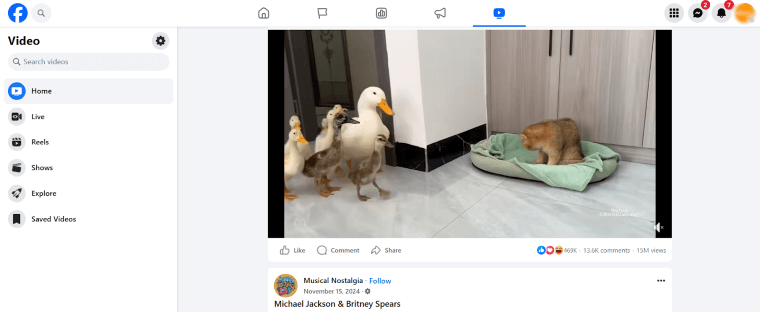
Key Features
- Wide audience reach through Facebook’s ecosystem
- Ad revenue sharing with creators
- Social sharing and engagement
- Exclusive content from major brands
- Large user base
- Integrated with Facebook’s social features
- Easy to share and engage with content
- Content discovery is algorithm-driven
- Ad-heavy experience
7. Dailymotion
Founded in 2005, Dailymotion is one of the oldest video-sharing platforms. It offers a user-friendly interface similar to YouTube's. Dailymotion is widely used in Europe and has more relaxed content policies than YouTube.

Key Features
- User-friendly interface
- Less restrictive content policies
- Revenue-sharing opportunities for creators
- Global audience reach
- Familiar interface
- More flexible content guidelines
- Revenue opportunities for creators
- Smaller audience compared to YouTube
- Limited monetization options
8. BitChute
BitChute, founded in 2017, is a free speech-focused video-sharing platform that distributes videos using peer-to-peer technology rather than centralized servers.
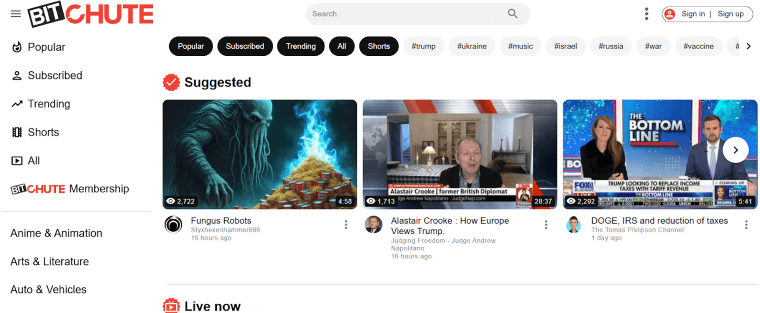
Key Features
- No strict content moderation
- Alternative monetization options
- Decentralized hosting model
- Focus on independent creators
- Less censorship
- Independent hosting
- Supports free speech
- Not Mainstream
- Can attract controversial content
9. SproutVideo
SproutVideo is a premium video hosting platform designed for businesses and marketers that need secure, high-quality video hosting. It was founded to provide companies with professional video solutions and analytics tools to improve marketing strategies.
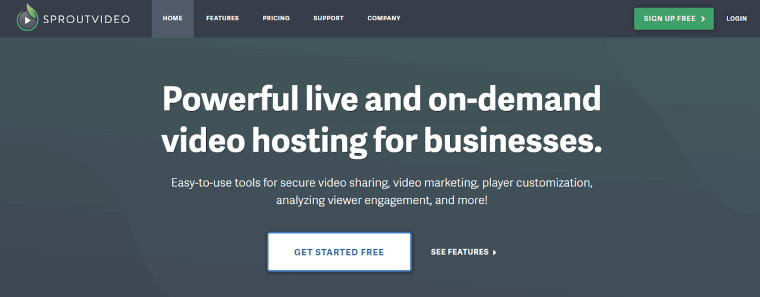
Key Features
- Advanced privacy and security controls
- High-quality video hosting
- Detailed analytics and viewer tracking
- Custom branding options
- Great for businesses
- Secure and private hosting
- Advanced customization
- Not a social video platform
- Paid plans required for most features
10. Odysee
Odysee is a blockchain-based video-sharing platform that launched in 2020, built on the LBRY protocol. It offers a decentralized alternative to YouTube, giving creators greater control over their content and monetization. The platform uses cryptocurrency (LBRY Credits) to reward both creators and viewers for their engagement.
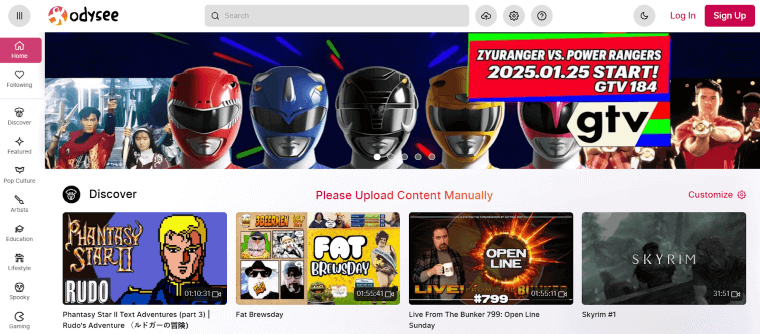
Key Features
- Decentralized and censorship-resistant
- Cryptocurrency-based rewards system
- No intrusive ads
- Strong content ownership and control for creators
- No strict content moderation
- Earn cryptocurrency for creating and watching videos
- Open-source and community-driven
- Smaller user base compared to YouTube
- Can attract controversial content
Pros and Cons of YouTube
YouTube is a powerful platform that has revolutionized the way we consume and create video content. Nonetheless, similar to any platform, it has advantages and disadvantages. Understanding both the pros and cons can help creators navigate their journey effectively. Let’s have a look at them.
- Massive global audience reach
- Strong monetization options through ads, memberships, and sponsorships
- Advanced recommendation algorithm for content discovery
- Various content formats including live streaming and Shorts
- Easy integration with Google's ecosystem
- Increasing number of ads affecting user experience
- Strict content moderation policies leading to demonetization issues
- High competition makes it difficult for new creators to stand out
- Privacy concerns and data tracking
- Revenue sharing may not always favor content creators
How to Make Impressive YouTube Content
Creating engaging YouTube content requires a combination of creativity, technical skills, and strategic planning. Here are some essential tips to help you produce impressive videos.
1. Create High-Quality Videos
Investing in high-quality equipment is essential for achieving professional-looking content. Start by selecting a good camera, such as a DSLR or mirrorless model, which can capture high-resolution footage.
Additionally, a quality microphone is crucial for clear audio, as poor sound quality can detract from even the most visually stunning videos.
2. Optimize Video Titles and Descriptions
To improve your video's visibility in search results, it's important to optimize your titles and descriptions with relevant keywords. Research keywords that resonate with your target audience using tools like Google Trends or YouTube’s search bar.
Incorporating these keywords strategically in your video title, description, and tags can significantly enhance your content's discoverability.
3. Engage with Your Audience
Creating a dedicated community around your channel is essential for achieving long-term success. Interact with your audience by replying to comments, posing questions, and inviting their feedback.
Consider conducting live Q&A sessions to interact with viewers in real-time and address their queries directly.
4. Leverage Thumbnails and Branding
First impressions matter, especially on YouTube. Eye-catching thumbnails and consistent branding make your videos more recognizable and appealing.

|
Manage Multiple Stores In One Account Multiple Stores Management - Link and manage multiple stores on different platforms in one place |
Design thumbnails that are high-resolution, engaging, and visually compelling, as these elements can substantially increase click-through rates.
5. Analyze and Improve
Utilize YouTube Analytics to track your video's performance and gain insights into audience behavior. This powerful tool provides valuable data on metrics such as watch time, audience retention, and demographic information.
Understanding how your audience interacts with your content allows you to make data-driven decisions to optimize future videos.
6. Invest in SEO for YouTube
In addition to optimizing titles and descriptions, investing in search engine optimization (SEO) for your videos is crucial. Use relevant tags to categorize your content effectively, helping YouTube understand what your video is about.
Including closed captions can also make your videos more accessible and improve discoverability.
7. Collaborate with Other Creators
Collaborating with other influencers and YouTubers in your niche can significantly expand your reach and introduce new subscribers to your channel.
Partnering with creators who share a similar audience allows you to leverage each other's strengths and bring fresh perspectives to your content.
Conclusion
While YouTube remains the dominant video-sharing platform, it has its challenges. In 2025, numerous YouTube alternatives will be available, whether you are looking for fewer ads, better privacy, or alternative monetization models. Exploring these alternatives can help you find the best platform that aligns with your content strategy and audience preferences.











 Company
Company
 Why Choose DSers
Why Choose DSers
 Blog
Blog
 Help Center
Help Center




 Live Chat
Live Chat